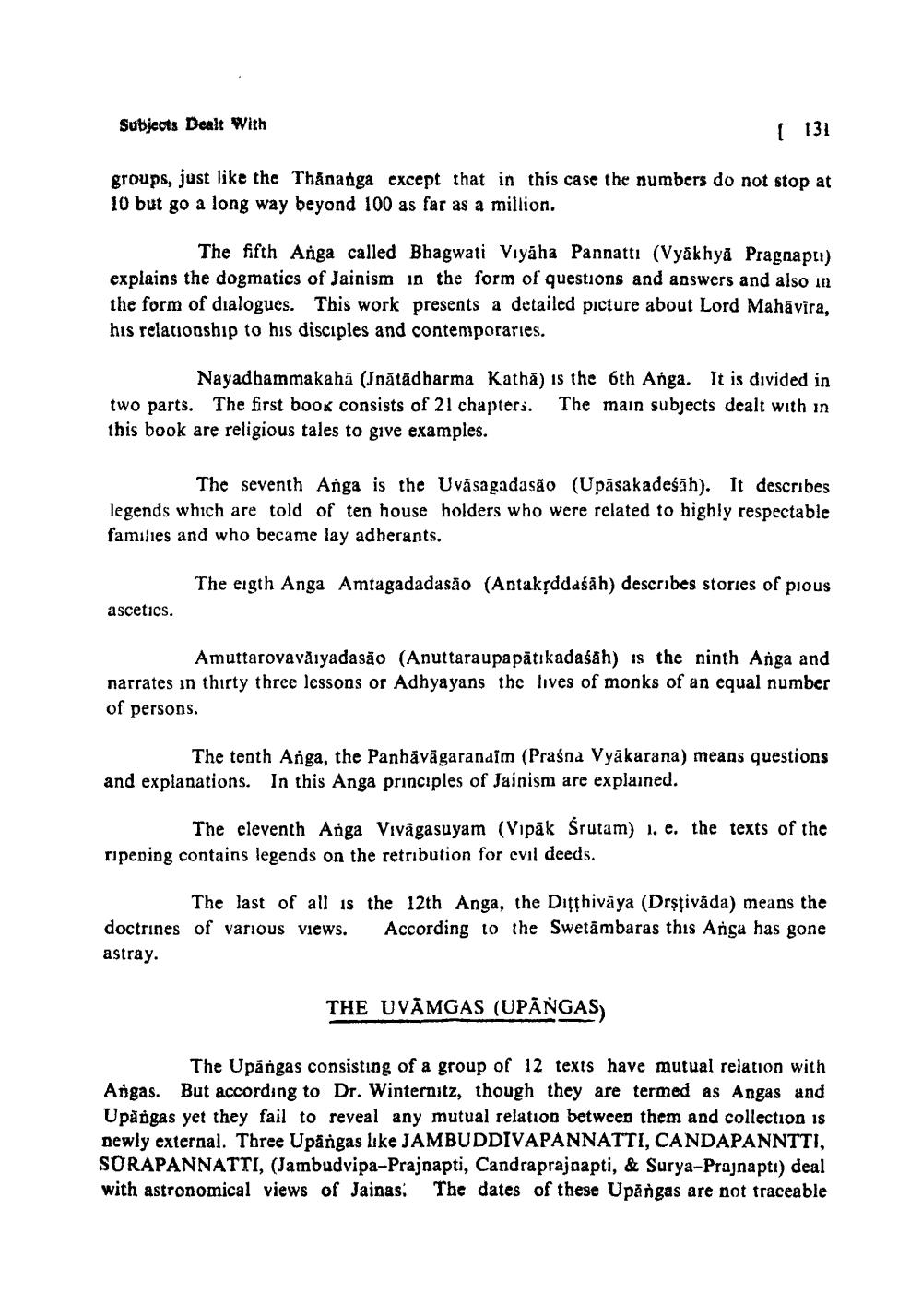________________
Subjects Dealt With
[ 131
groups, just like the Thānanga except that in this case the numbers do not stop at 10 but go a long way beyond 100 as far as a million.
The fifth Anga called Bhagwati Viyaha Pannattı (Vyakhya Pragnaplı) explains the dogmatics of Jainism in the form of questions and answers and also in the form of dialogues. This work presents a detailed picture about Lord Mahāvira, his relationship to his disciples and contemporaries.
Nayadhammakahā (Jnátadharma Kathā) is the 6th Anga. It is divided in two parts. The first book consists of 21 chapters. The main subjects dealt with in this book are religious tales to give examples.
The seventh Anga is the Uvasagadasão (Upāsakadeśāh). It describes legends which are told of ten house holders who were related to highly respectable families and who became lay adherants.
The eigth Anga Amtagadadasão (Antaksddasah) describes stories of pious
ascetics.
Amuttarovavăiyadasão (Anuttaraupapātıkadasah) is the ninth Anga and narrates in thirty three lessons or Adhyayans the lives of monks of an equal number of persons.
The tenth Anga, the Panhāvāgaranaim (Praśna Vyākarana) means questions and explanations. In this Anga principles of Jainism are explained.
The eleventh Anga Vivāgasuyam (Vipak Śrutam) 1. e. the texts of the ripening contains legends on the retribution for evil deeds.
The last of all is the 12th Anga, the Dithivāya (Drşțivada) means the doctrines of various views. According to the Swetāmbaras this Ariga has gone astray.
THE UVĀMGAS (UPĀNGAS,
The Upangas consisting of a group of 12 texts have mutual relation with Angas. But according to Dr. Winternitz, though they are termed as Angas and Upåñgas yet they fail to reveal any mutual relation between them and collection is newly external. Three Upangas like JAMBUDDIVAPANNATTI, CANDAPANNTTI. SORAPANNATTI, (Jambudvipa-Prajnapti, Candraprajaapti, & Surya-Prajnapti) deal with astronomical views of Jainas. The dates of these Upangas are not traceable




